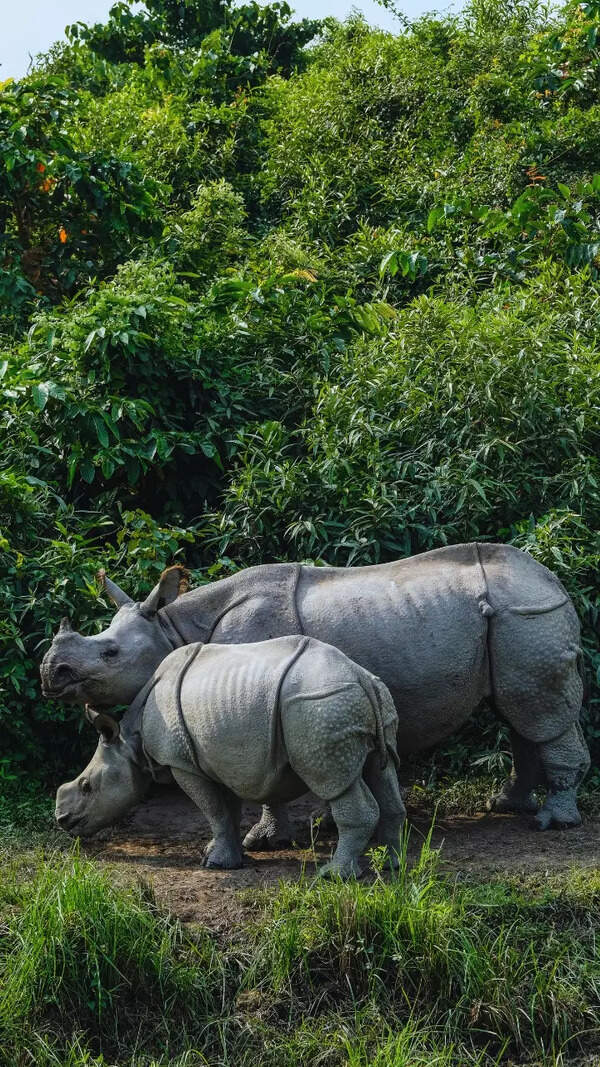- News
- India News
- Government banks on ‘normal’ monsoon, targets record foodgrain output
Trending
This story is from April 30, 2021
Government banks on ‘normal’ monsoon, targets record foodgrain output
Banking on forecast of ‘normal’ monsoon rainfall this year, the Centre on Friday set a record foodgrain production target of 307 million tonnes (MT) for 2021-22 crop year (July-June cycle). The target is 1.3% (4 MT) higher than the estimated food-grain production of 303 MT in the Covid-19 pandemic-hit year of 2020-21.
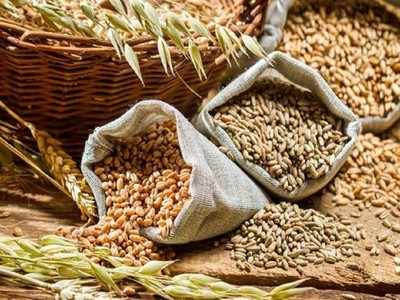
Though almost all foodgrains saw a higher target compared to the previous year's output, the government set the highest target (4% higher than 2020-21) for climate resilient and less water-consuming coarse cereals such as jowar, bajra, maize, ragi and small millets.

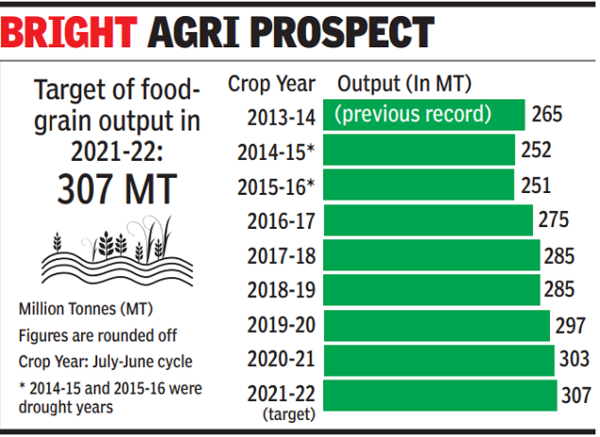
Under the 2021-22 targets, wheat, pulses and water-guzzling paddy (rice) may see a growth of less than 1% compared to their 2020-21 production. Overall target of 307 MT includes 151 MT of Kharif crops (that includes 121 MT paddy) and 156 MT of Rabi crops including 110 MT of wheat.
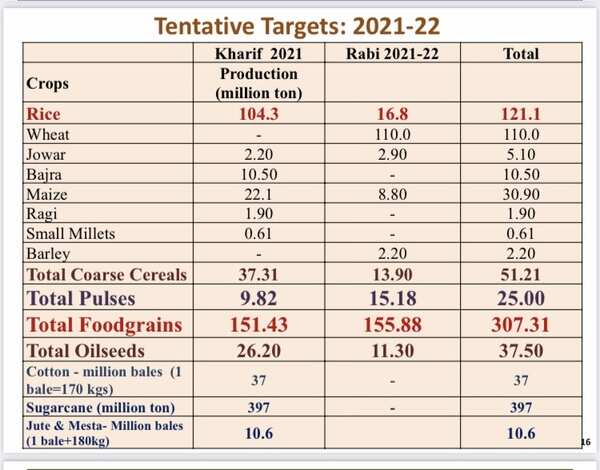
The new higher target of almost all foodgrains was released during the Kharif conference where the agriculture ministry on Friday discussed preparedness of the upcoming sowing season with representatives of states in the backdrop of the prospect of good and well distributed rainfall during June-September monsoon season.
The India Meteorological Department (IMD) had on April 16 predicted overall ‘normal’ monsoon rainfall during June-September period across the country, saying the seasonal rainfall is likely to be 98% of the Long Period Average (LPA) with a model error of +/- 5%. The LPA of the season rainfall over the country as a whole for the period 1961-2010 is 88 cm. The rainfall to an extent of 96-104% of the LPA is considered ‘normal’ while rainfall below 90% of the LPA is considered deficient (drought year).
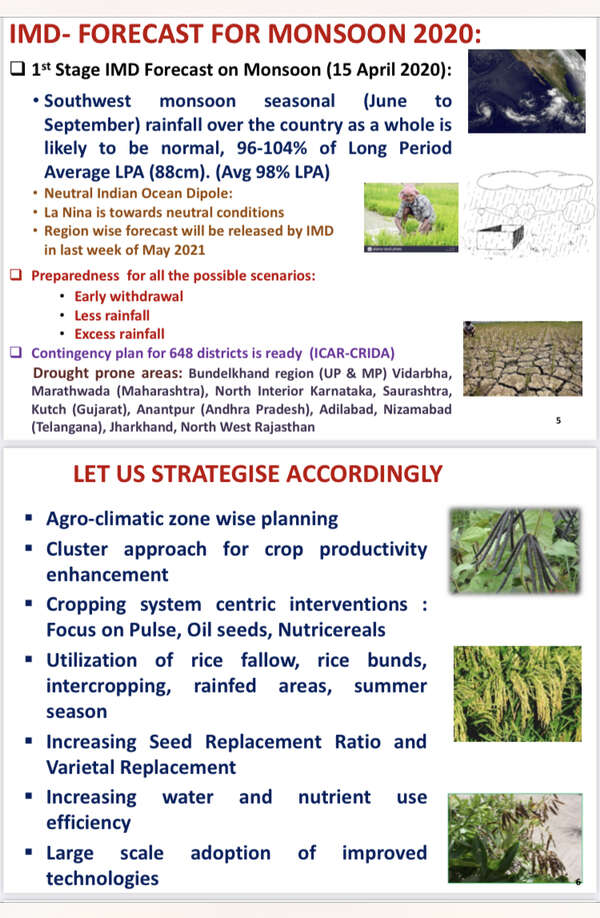
The IMD’s prediction shows that the 2021 monsoon will be the third consecutive year of good rainfall after 2019 and 2020 that saw a good jump in overall food-grains production in 2019-20 and 2020-21. On the other hand, two consecutive drought years (2014 and 2015) had seen a dip in foodgrains production in 2014-15 and 2015-16 crop years, reflecting the importance of good monsoon in the country which is largely dependent on rain-fed agriculture.
Referring to contribution of agriculture in GDP that increased from 17.8% in 2019-20 to 19.9% in 2020-21, agriculture minister Narendra Singh Tomar while inaugurating the Conference noted how the sector has shown resilience amid the adversities of Covid-19 pandemic and assured the states all help to take the growth forward.
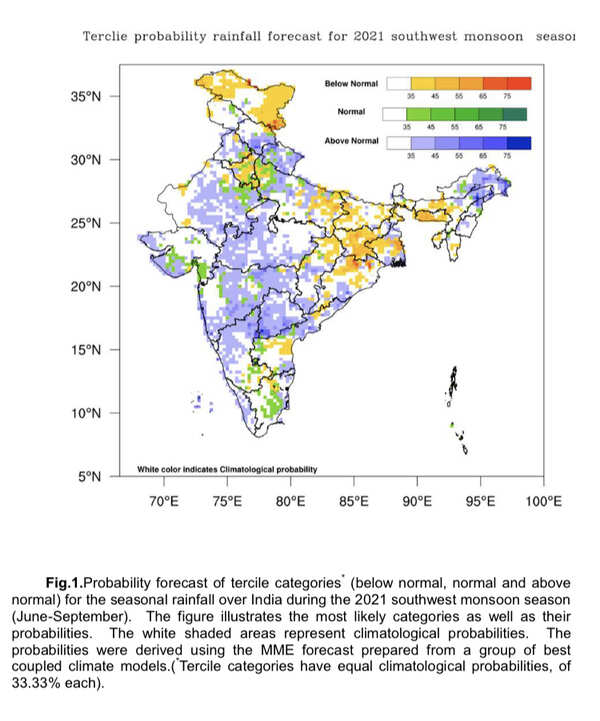
He, however, expressed concerns over the shortage of oilseeds and pulses, and requested states to work on mission mode to overcome the shortage situation. Tomar also urged the state representatives to identify such areas which are following organic farming and are free from chemicals so that they can be certified as organic and can be linked with the market.
Besides looking at availability of inputs for the upcoming sowing season, the participants also discussed preparedness for drought like situation if it occurs in any district, strategy for production of oilseeds and pulses; procurement of crops at minimum support price (MSP), and action plan and guidelines for farm management in the wake of the current pandemic.
End of Article
FOLLOW US ON SOCIAL MEDIA




